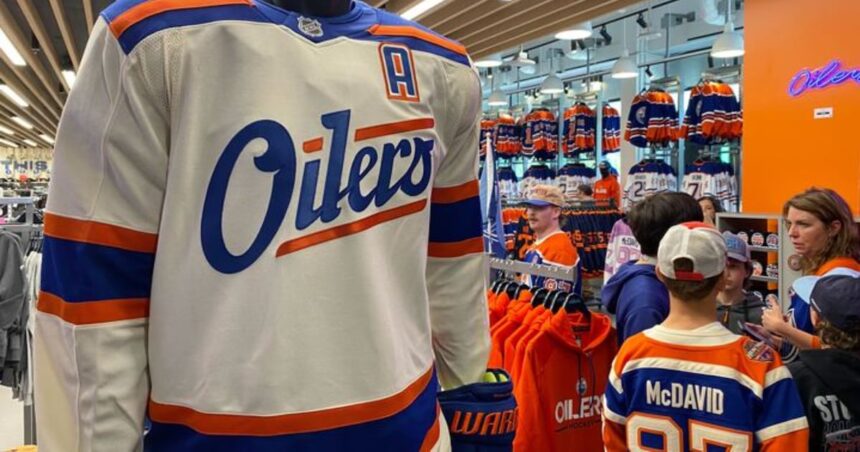The intersection of sports and fashion has always been a fascinating cultural arena where tradition meets innovation. On Saturday, the Edmonton Oilers gave fans their first glimpse of the team’s highly anticipated alternate uniform for the 2025-26 season, generating immediate buzz throughout the hockey world.
Standing before an electrified crowd at the annual Fan Day celebration, Oilers captain Connor McDavid modeled the new jersey design that simultaneously honors the franchise’s storied past while boldly stepping into its future. The jersey features a reimagined take on the team’s classic blue and orange color scheme, with subtle geometric patterns inspired by Edmonton’s architectural landmarks incorporated into the shoulder panels.
“What we wear on the ice is more than just fabric—it’s our identity,” McDavid told the gathering of several thousand fans. “This jersey represents everything we stand for as a team and a community.”
The reveal comes at a pivotal moment for the franchise, which has been carefully balancing respect for its dynasty years with the need to build a contemporary brand identity that resonates with younger audiences. This cultural tightrope is one many legacy sports organizations are currently walking, as teams across all major leagues attempt to modernize without alienating traditionalists in their fan bases.
Sports merchandising has evolved into a multi-billion dollar industry where design decisions are scrutinized as much for their cultural significance as for their aesthetic appeal. The Oilers organization spent over eighteen months developing the new alternate jersey, consulting with fans, players, and design specialists to create something that would feel authentic while offering something fresh.
“The modern sports uniform has to serve multiple masters,” explains Samantha Torres, sports marketing analyst at University of Alberta. “It needs to perform on the ice, look good on television, translate to retail sales, and most importantly, create an emotional connection with fans. The Oilers have smartly recognized that their jerseys are cultural artifacts as much as they are sportswear.”
What makes the new design particularly interesting from a cultural perspective is how it addresses hockey’s ongoing evolution. The sport has been working to expand its appeal beyond traditional markets and demographics, and uniform design plays a surprisingly significant role in that strategy. The new jersey incorporates subtle nods to Indigenous design elements—a thoughtful acknowledgment of the land on which the team plays and the diverse community it represents.
Fan reaction at the unveiling was overwhelmingly positive, though social media quickly filled with the expected debate between purists and progressives. This tension itself reveals much about how sports fandom has changed in the digital age, where every design choice becomes fodder for instant analysis across platforms.
The Oilers organization confirmed that the new jerseys will debut on ice during the home opener in October, with retail versions available for purchase beginning next week. If pre-orders are any indication, the design is already proving to be a commercial success, with the team’s online store reporting unprecedented traffic following the announcement.
As sports continue to occupy an increasingly central position in our cultural landscape, these seemingly cosmetic changes take on deeper significance. A team’s uniform isn’t merely equipment—it’s a canvas for expressing values, building community, and yes, driving revenue.
For the Edmonton Oilers and their passionate fan base, this new jersey represents more than just a change of clothing. It symbolizes a franchise confidently moving forward while honoring what came before—much like the city it calls home.
The question remaining is whether this new on-ice identity will translate into renewed championship aspirations for a franchise eager to add another Stanley Cup to its collection. After all, in sports, looking good is important—but winning always remains the ultimate fashion statement.
Read more at CO24 Culture and follow trending sports stories at CO24 Trends.














